Discovering one of Iran’s sandy deserts soon?! Here’s a travel guide to make sure you have the safest and most pleasant desert trip in Iran. From its north to its southern border, Iran features deserts of unique beauty and unspoiled nature. Yet, beside these beauties, travelling to the desert has its own challenges and demands following certain guidelines. The heat, the temperature, the vast dry land, and the lack of water are of the features that make knowing the basic guidelines for traveling to desert a must. Whether you’re going with a tour, with friends and family, or on your own doesn’t make a difference, traveling to desert can be a delightful adventure, a pleasant and peaceful trip, or simply a bitter experience. But which one it will be depends on how ready you are for your visit.
Contents
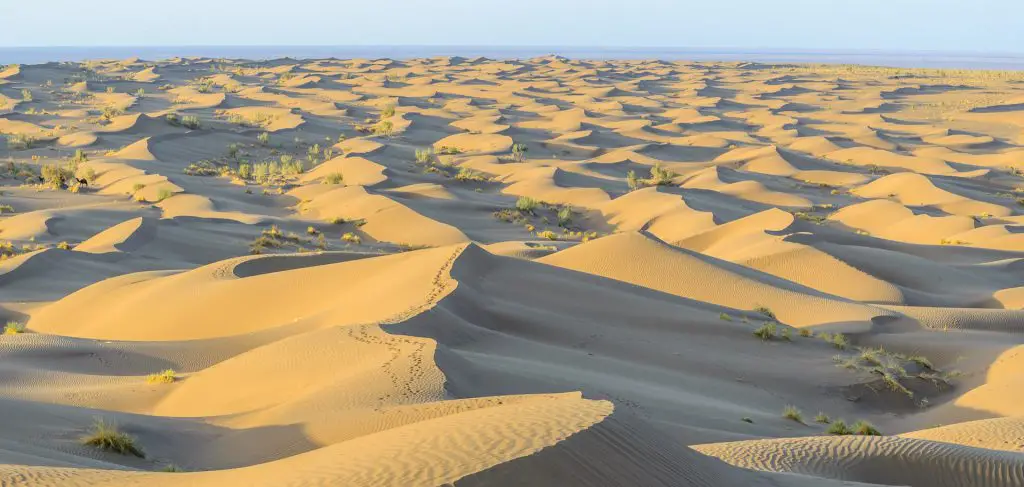
The Right Way to Hike in the Desert
For both native and international tourists, the deserts of Iran are of the most unique and popular natural attractions. Thousands of people visit these amazing deserts each year. But it is a familiarity with hiking in the desert that brings out all of its peace and beauty. On the other hand, not knowing the principles of hiking in the desert can make you do thinks that cause dehydration, heat exhaustion or even heatstroke. The following tips might sound obvious and basic, but knowing and following them can prevent serious difficulties and help you enjoy the beauties of desert with no hassle or worry.
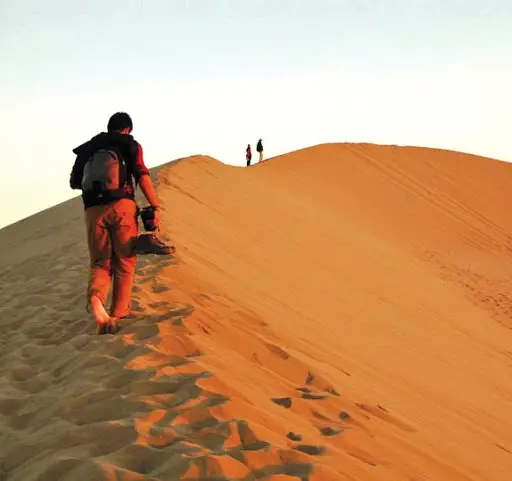
1. Join Guided Desert Tours
I know that the charms of desert are irresistible, but you can’t just give in to its magic! For enjoying a desert trip in Iran, you need to be with a professional or local guide. This will prepare you for bigger adventures.
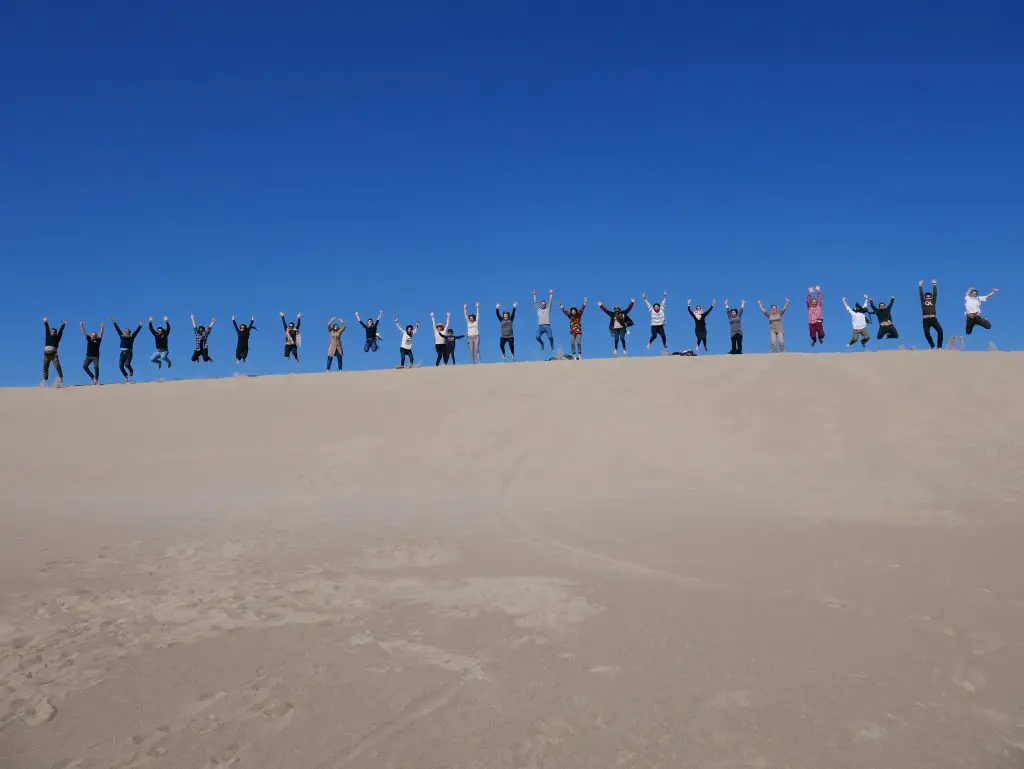
2. The Best Time for a Desert Trip in Iran
For nearly all of Iran’s deserts, fall and the last 2 months of winter are the best time to visit. The heat of the desert in summer is obviously intolerable and it is very cold and dry in winter. The highest temperature recorded in Iran was 72° centigrade in Lut Desert.
3. The Best Time to Start the Desert Adventure
In the desert, the temperature varies significantly during the day. The best time to start your desert trip in Iran is either early in the morning or before sunset. In midday, try to avoid the sunshine and find somewhere to stay instead of having activities that make you dehydrated and feel tired.
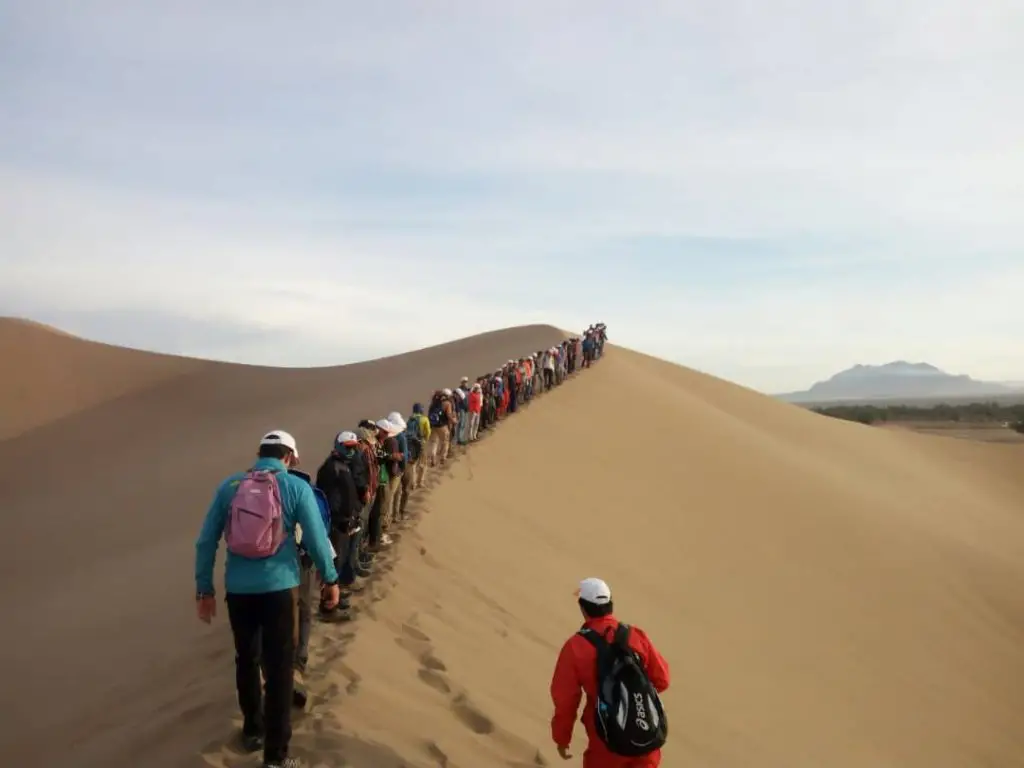
4. Plan Cautiously
Even if your trip to the desert is for only a day, let your friends and family know your plan, your destination map, your return time and if possible, your itinerary. The desert looks the same in many parts. So, don’t follow unknown paths if you don’t have a map, a compass and/or a GPS. Know your own limitations and don’t change your plan.
5. Carry a LOT of Water
Take 4 liters of water per person for each day you spend in the desert. Never trust the existence of water resources in the desert. The spring that you have in mind might have evaporated in a single day. Four liters of water per person is the least amount of water you should take with you.
6. What to Wear
For a desert trip in Iran, wear cotton clothing. Cotton absorbs body moisture and stays wet longer. So, it cools your body and prevents heat exhaustion. Wear hiking shoes and lightweight clothing in light colors. Also, wear a sleeved shirt that protects your arms against sunburn. Taking sunglasses, sunscreen and a desert hat is a must. The temperature can fall significantly at night, so take extra warm clothes too.
7. How to Pack
To have more space, roll your clothes instead of folding them. Put your warm clothes and underwear in . Put your toiletry in a toiletry kit. If you have extra shoes with you, you can put your socks or valuable stuff in them. Put your water bottle in a plastic bag and make sure your bag is perfectly zipped. Wear your backpack in a way that your back tolerates most of the weight, not your shoulders. Wear both shoulder straps and fix your backpack high on your back.
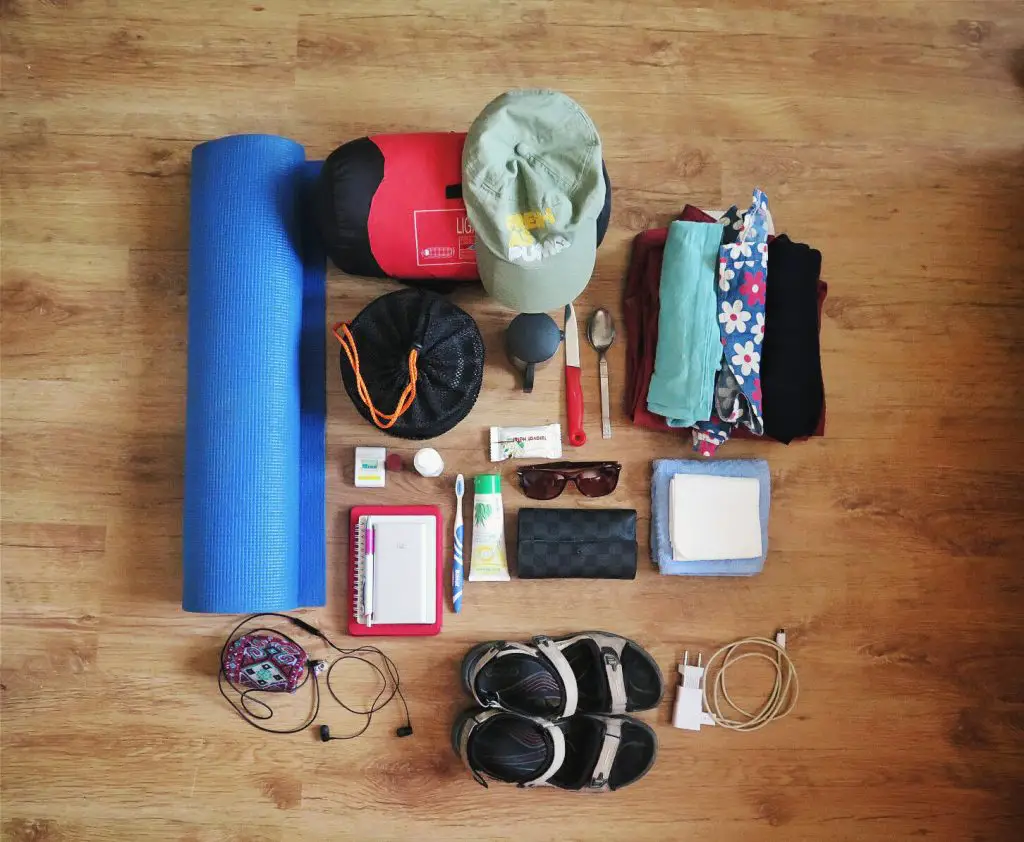
8. How to Eat
For a desert trip in Iran, carry nutritious food that’s light and long-lasting. You can take nuts and salted meat. Drink a lot of water and or flavored drinks to satisfy your thirst or regain your energy.
9. How to Walk
Walk slowly and continuously. This will prevent excessive sweating and dehydration. Don’t take long steps. Hike at a suitable time and prevent direct sunshine as much as possible.
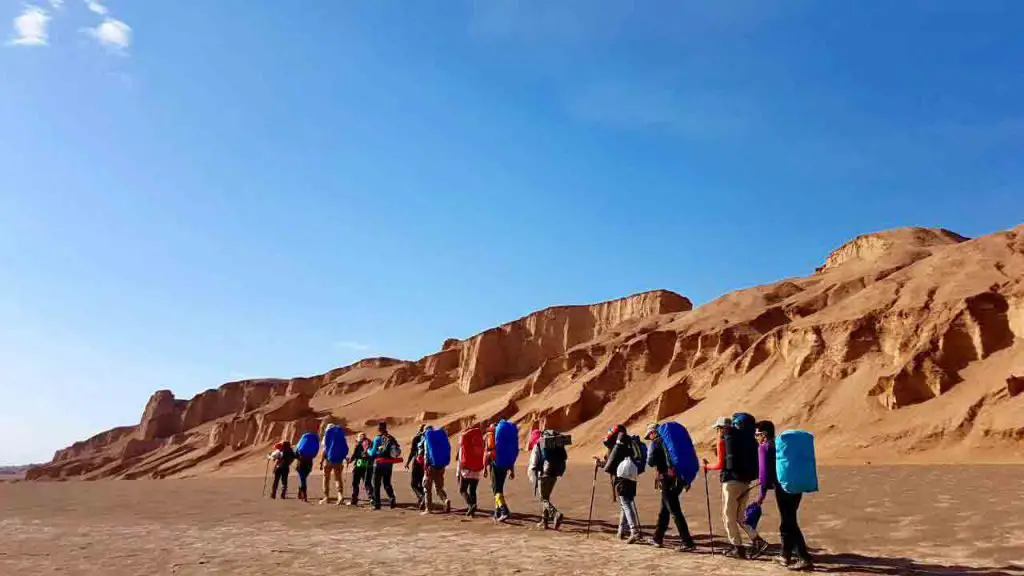
10. Don’t Trust Your Eyes
Don’t let your eyes deceive you. Distances in the desert aren’t as you see them. The distance you might estimate as 5 km might actually be 20 km long.
11. Watch Where You Step
The lands on which you see salt polygons are actually parts of salt lakes. Some places around these lakes can be swampy and very dangerous, especially in Spring. Don’t hike on these kinds of lands without a specific plan and don’t deviate from known paths.
12. Watch Out for Dangerous Animals
Your guide must be familiar with different kinds of biting animals and how to perform first aid for their bites. Know that some animals don’t attack you unless they feel threatened. If you see animals, keep calm. Monitor lizards are the most dangerous lizards found in Iran.
13. Rest!
Hiking in the desert is a conflict between determination and fatigue. Rest at specific times and don’t hike continuously. This way, you’ll be ready for any kind of danger.
Survival Techniques on a Desert Trip in Iran
We generally think that if we get lost in nature, the best thing to do is get ourselves to the nearest residential area as soon as possible. But survival in the desert means a fine balance between preserving resources and consuming enough food and water, between avoiding the heat of the day and the cold of the night, and at the same time, moving on. Here are 8 simple but vital tips for survival:
-
Go on a Water Budget
On your desert trip in Iran, have a water ration and drink little amounts of water. You can guess your level of dehydration by the color of your urine. The lighter the urine, the more you can restrict yourself in drinking. But if your urine is dark, drink more water. If you find a water resource, don’t rush for drinking or filling your half-empty bottle with it. Because the water might be poisoned or too salty.
-
Go on a Food Budget
The more you eat, the thirstier you get! So, if you have enough food, use it little by little and in small portions, only to relieve the pain of hunger. If you don’t have water, you’d better avoid eating food as long as possible. Without enough water, being full is the last thing you want to experience!
-
Cover Your Head
The deadliest thing to do on a desert trip in Iran is exposing yourself to sunshine and dehydration. When your head is exposed to direct or even indirect sunlight, your body works harder to cool itself. So, before anything else, remember to wear a hat. If you don’t have a hat, cover your head with a scarf or even a piece of your clothes.
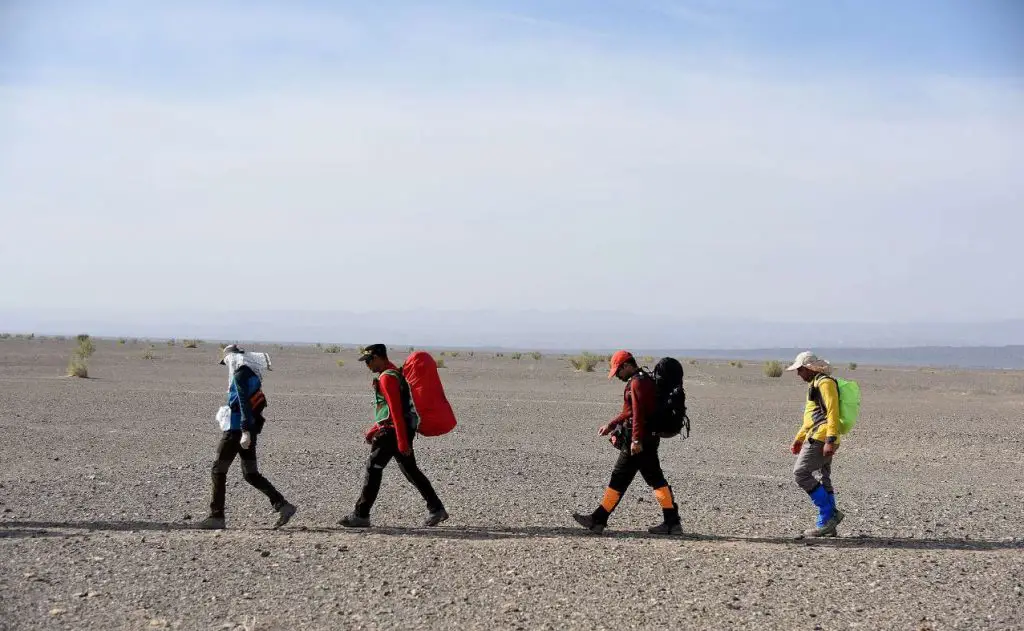
-
Find Cover
It isn’t any less important than covering your head! Taking shelter in the shadow or building a shelter must be one of your priorities. The more you avoid the sun, the more you can preserve water. You’d better find a natural shadow first and start building the shelter after sunset. Try only to move in the morning or at sunset when it is a little cooler.
-
Calm down!
Being nervous is the biggest enemy of survival. Try to relax and evaluate the situation you are in. Then take the necessary steps. Hurrying doesn’t get you out of the desert, it only makes things worse.
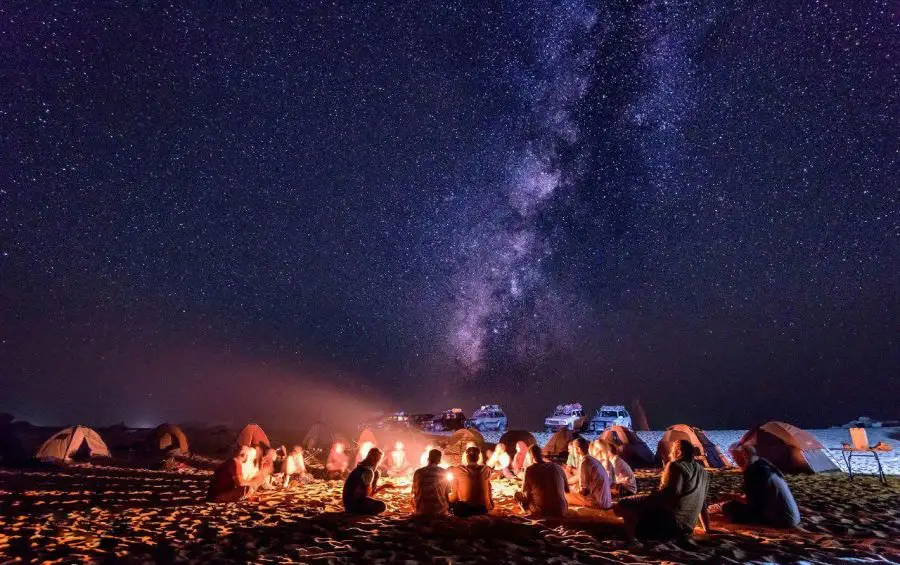
-
Stay Hydrated
While hiking in the desert, you need to minimize the waste of your energy. This will keep your body hydrated and reduces your need for eating. Walk slowly, avoid sweating and keep your mouth closed to stop dehydration by breathing. Covering your head with a piece of cloth or scarf can also slow down the dehydration.
-
Mark
If you’ve decided to find your way toward residential areas, the first thing you do should be marking your present situation. Leave a mark or a note for the rescue team or any other person who might pass by (mark the direction you’re taking too). Before starting your attempt, estimate the distance and use natural elements for marking your path and staying on the right track.
-
Be Prepared for the Cold!
In most deserts, the temperature falls significantly after sunset. Sometimes, it gets so cold that you might freeze! Finding or building a shelter for the night is as important as finding a shelter from the sun during the day.
Like to Go on a Desert Trip in Iran’s other beautiful deserts?
With our diverse range of tours and our tailor-made option, almost all of Iran’s deserts will be yours to discover. Check out our Complete Guide to Iran Deserts to know Iran’s beautiful deserts and join one of our Desert Tours.


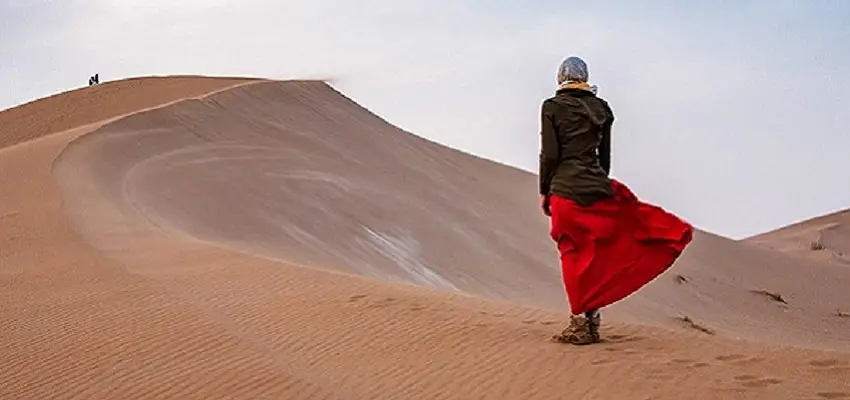
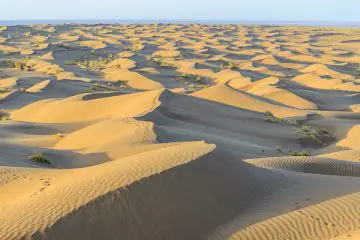
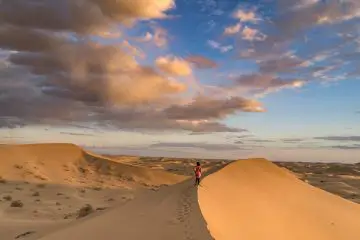
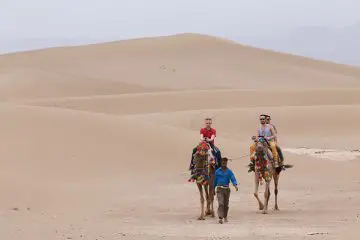
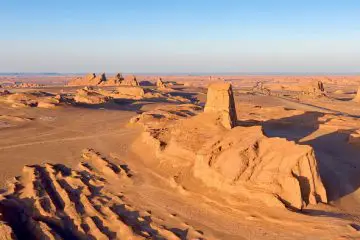

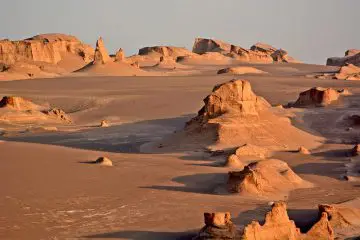
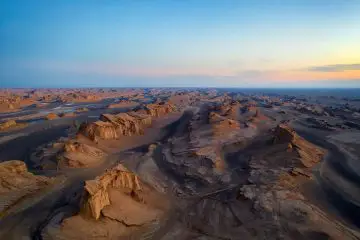


Comments